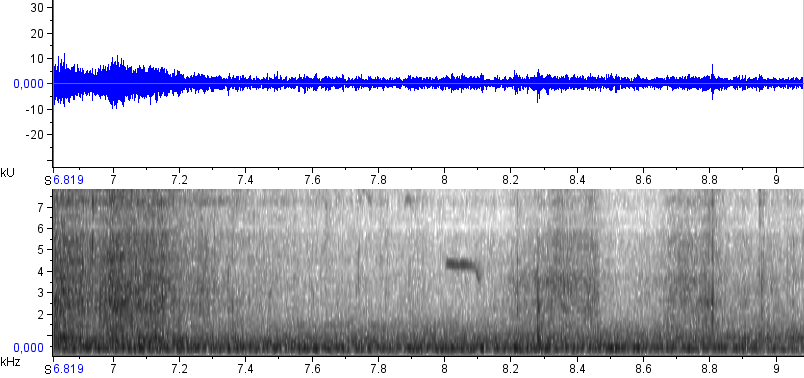 |
| ducktastic at Østensjøvannet |
Still cold today but the blue skies have been replaced by
clouds although they are not the dark, thick, low clouds we have had most of
November such that there was proper daylight. I headed for Bygdøy again.
Nothing of note on the sea but the two refugees are still present finding
enough grass to eat. It will be interesting to see what they do when the snows
come.
At Hengsenga again one, possibly two, Chiffchaffs (gransanger). One that I managed some pictures of was a green bird and this didn't call. A bird that did call and which I managed to record a single contact call from wasn't necessarily the same bird and in the brief view I saw of it was perhaps browner (although definitely not the bird of 2 days ago) but the views weren't good enough. The call was just like yesterdays and the sonogram is much better than yesterday and is I think useable but does not fit anything I’ve seen before with the fall off at the end being unexpected. In the frost covered chest high vegetation it was very difficult keeping track of the bird(s) especially as they called very little and were not responsive to me pishing or playing various calls/song.
 |
| Chiffchaff from the west of Siberia |
I eventually lost track of them and it started snowing so I gave up (for today).
These Chiffchaffs are perplexing and just when you think you have got it then you realise the whole species complex is still a mess.
I thought it would be worth checking the docks as inland waterd are now freezing over. At Kongshavn there were a couple hundred each of Mallard (stokkand) and Goldeneye (kvinand) and with 14 Tufteds (toppand) a 1cy male Scaup (bergand).
At Østenjøvannet the lake is 99% frozen but 45 Mute swans (knoppsvane) were still present. Maybe the young birds are still not feeling ready to migrate? Family groups were flying around but kept returning to the small patch of open water. Still 5 each of Wigeon (brunnakke) and Teal (krikkand) and a few geese. The male Pintail (stjertand) is now looking splendid with a proper tail and the plastic shelduck provided colour. Very durprisingly there were only 2 Coot (sothøne) yet 3 Moorhen (sivhøne). Normally around 10 Coot overwinter here but the Moorhens disappear completely as soon as the first ice comes (edit: it turns out there were 220 Coot on a small patch of ice free water at the other end of the lake...oops!). Both these species migrate at night and must have left enmasse two nights ago. But to where and why do we never see them migrating in daytime?
 |
| Østensjøvannets returning male Pintail now has a proper tail. Last year when it was a 1cy the tail was quite short |
 |
| a variety of widlfowl |
 |
| the young male Scaup at distance |
 |
| more wildfowl variety including Wigeon |






No comments:
Post a Comment